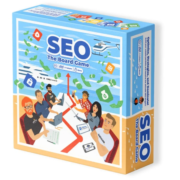How Agile Content Marketing Wins in a Fast-Changing Digital World – MarketingProfs
by Cassandra Gucwa
As search algorithms and customer needs evolve at a rapid pace, brands struggle to keep their SEO and content marketing strategies relevant.
The brands achieving success today are the ones that are embracing agility and truly listening to their audiences. They respond quickly to changes in the market and user needs, iteratively improving their content rather than sticking to a rigid, outdated strategy.
In the early 2010s, brands focused heavily on keyword targeting and density to rank well in search and to be discoverable. The relevance and uniqueness of content took a backseat to cramming content with keywords; topics were chosen based on driving search traffic rather than providing value.
That outdated approach no longer works. Google’s algorithms have become incredibly advanced at understanding semantic search intent and the contextual relevance of content. Plus, users have come to expect valuable, engaging experiences that actually speak to their needs.
Essentially, the days of gaming the system with keyword stuffing or thin content are over. Search engines and audiences alike now favor content that offers meaningful value.
As a result, taking an adaptable approach to SEO and content that emphasizes uniqueness, relevance, and engagement is now mission-critical for brands.
Unfortunately, many brands are stuck relying on outdated strategies that leave them struggling to engage audiences and convert leads.
To thrive today, brands need an SEO and content marketing strategy that can iterate quickly based on these types of insights:
By closely tracking those elements, brands can gain invaluable intelligence that they can they use to optimize their SEO and content strategies on an ongoing basis. They can spot opportunities for improvement or gaps to address, enabling them to better meet the needs of users and search engines alike.
Without taking such an agile, adaptable approach—instead of relying on outdated, static content plans—brands miss out on connecting with audiences in a meaningful way.
When brands take an adaptable, insights-led approach to content, with a focus on continually improving relevance, they experience two major payoffs:
Rather than taking months to develop a large batch of content and hoping it will work, savvy brands today continually, iteratively create content based on performance data and user feedback.
That constant refinement allows them to amplify the impact of content to drive engagement, conversions, and loyalty.
Becoming an agile content marketing organization with ingrained processes for continual optimization takes work. You can embrace adaptability by taking the following three steps.
Set your strategy up for flexibility from the start. That means committing to regular review cycles and installing feedback channels:
Foster an experimental, innovative mindset across your teams:
Think “content sprints”—small batches and constant learning:
The most impactful brands today view change as an opportunity rather than a risk. They are excited to test new content approaches and win by learning faster than their competitors.
But adapting to agile content iteration can feel daunting to leaders and marketing teams accustomed to formulaic, fixed content production cycles.
Total content flexibility across every program isn’t realistic for most brands. So pinpoint specific campaign or initiative opportunities as a starting point for building agile content muscles.
From there, a phased introduction is wise to allow for adjustments. Leaders should identify a low-risk pilot that allows their team to experiment with agile content methods at a small scale.
Expect a learning curve. Gather feedback from stakeholders on what’s working well versus improvements needed as you evaluate expanding the approach.
Proper governance should allay the concerns of marketers worried that content quality or brand integrity could suffer from increased velocity. Build oversight into rapid iteration cycles through various measures, such as mandatory peer review of draft content, or tap executive stakeholders for final sign-off.
With the right crosschecks in place, agile content production doesn’t mean compromising quality.
Finally, organizations concerned about measuring return on investment from increased agile content operations should focus on clear success metrics.
As with any marketing initiative, identify specific KPIs you want agile content methods to impact: conversions, lead gen forms, time on site, or other factors. Continually optimize the approach to drive better performance on those measured goals over previous efforts.
Brands that embrace agility in their content strategies separate themselves from competitors that are still relying on fixed, outdated plans that leave them flat-footed.
The pace of digital change is only accelerating, from shifts in platform algorithms to innovations that evolve consumer expectations. Brands that commit to continually optimizing their content through tapping meaningful performance data and customer insights will win more attention and loyalty over time.
So, even though constant change means more work for marketing teams—to continually refine and improve—the opportunity to connect with audiences at precisely the moments they need it most creates massive value.
In the end, agile content marketing fuels more authentic brand-customer relationships and drives growth. The rewards are well worth the effort for brands who can keep pace.
Four Agile Practices for More Efficient Content Production
Five Advantages of Agile Marketing
How Small Marketing Teams Can Achieve Big Content Wins
Beyond Content Marketing: 10 Steps to Real ROI With Content Operations
Enter your email address to continue reading
How Agile Content Marketing Wins in a Fast-Changing Digital World
Don’t worry…it’s free!
Sign in with your preferred account, below.
Copy Link
Email
Twitter
Facebook
Pinterest
Linkedin
AI
ABOUT THE AUTHOR
Cassandra Gucwa is the founder and CEO of Menerva Digital, a digital marketing agency focusing on SEO and content strategy.
LinkedIn: Cassandra Gucwa
You may like these other MarketingProfs articles related to Marketing Content:
Keep me signed in
Sign in with your preferred account, below.
Over 600,000 marketers rely on MarketingProfs for B2B know-how every day. Don’t miss out on the latest marketing tips and techniques, delivered right to your inbox.
Subscribe today … it’s free!
Sign in with your preferred account, below.









